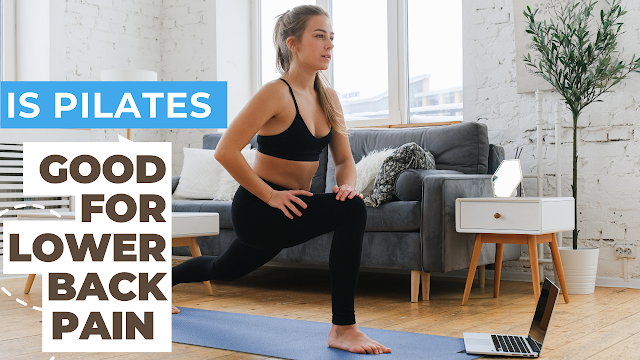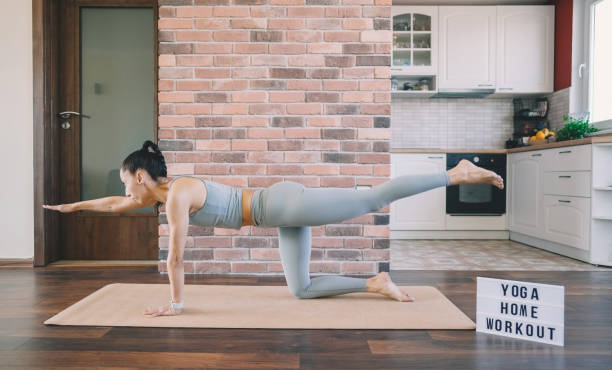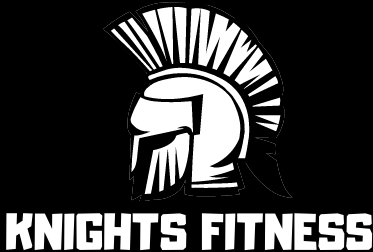Introduction
Hello there, dear readers Today, we're going to talk about a fantastic exercise method that helps you stay fit and active and works wonders in that nagging lower back pain that many of us experience.That's right, we are diving into the world of Pilates and how it can be your friendly companion on the journey to a pain-free back.
Lower back pain is the issue that affected by millions of people worldwide .
It can stem from various causes, such as poor posture, lazy lifestyles, muscle imbalances, or stress.
The pain can range from a dull ache to sharp, shooting sensations, making it difficult to carry out daily activities comfortably.
How Can Pilates Help?
The core muscles include the abdominals and the muscles around the lower back.
Strengthening these muscles provides crucial support to the spine, reducing strain and helping to reduce back pain.
Poor posture is often a big factor to lower back pain.
Poor posture is often a big factor to lower back pain.
Pilates exercises emphasize proper alignment, teaching you to engage the correct muscles and improve your overall posture.
By developing a balanced and aligned posture, you can reduce stress on the lower back and relieve discomfort.
Pilates incorporates gentle stretching and controlled movements that improve flexibility and increase your range of motion.
When muscular tissues are extra supple and elastic, they're much less probable to become stressful or tight, decreasing the probabilities of again ache.
This increased awareness helps you identify and correct movement patterns contributing to your back pain.By learning to move efficiently and with proper form, you can reduce strain on your lower back and prevent future discomfort.
Stress and tension can exacerbate lower back pain. Pilates incorporates breathing techniques and relaxation exercises that promote stress reduction and calmness. By focusing on controlled breathing and relaxation, you can alleviate muscle tension and find relief from back pain.
20-minute pilates for lower back pain
Are you tired of dealing with nagging lower back pain?Well, it's time to take control and give Pilates a try! In just 20 minutes a day, you can embark on a journey towards a pain-free back. This Pilates routine is specifically designed to target and alleviate lower back pain, while also strengthening your core and improving flexibility.
roll out your exercise mat, put on some comfortable clothing, and let's dive into this rejuvenating workout!
Begin on all fours, aligning your hands under your shoulders and knees under your hips. Inhale as you arch your spine and lift your head towards the ceiling (Cow Pose).
Warm-Up (5 minutes)
Cat-Cow Stretch
Exhale as you round your spine, tucking your chin towards your chest (Cat Pose). Repeat this flowing movement for 8-10 breaths.
Pelvic Tilts
Lie on your back with knees bent and feet flat on the mat. Inhale to prepare, then exhale as you tilt your pelvis and flatten your lower back against the mat. Inhale to
return to a neutral position. Repeat 10 times, focusing on engaging your core muscles.
Core Strengthening (7 minutes)
Bridge
Lie on your back with knees bent and feet hip-width apart. Inhale to prepare, then exhale as you lift your hips off the mat, forming a straight line from knees to shoulders.
Inhale at the top, then exhale as you lower your hips back down. Repeat 12-15 times, focusing on engaging your glutes and core.
Single Leg Stretch
Lie on your back with knees bent, shins parallel to the floor. Inhale to prepare, then exhale as you lift your head and shoulders off the mat, reaching your right hand towards your right ankle and extending your left leg forward. Inhale to switch sides, reaching your left hand towards your left ankle and extending your right leg forward.
Continue alternating for 10-12 repetitions, maintaining core engagement throughout.
Flexibility and Stretching (5 minutes)
Child's Pose
Begin on all fours, then slowly sit back on your heels while reaching your arms forward. Allow your forehead to rest on the mat or a block.
Take deep breaths, feeling the gentle stretch in your lower back. Hold for 1-2 minutes, allowing your body to relax.
Sit up tall with legs extended in front of you. Bend your right knee and place your right foot on the outside of your left thigh. Inhale to lengthen your spine, then exhale as you twist to the right, placing your left hand on your right knee and your right hand behind you.
Spine Twist
Hold for a few breaths, then repeat on the other side. Alternate sides for 3-4 repetitions, focusing on the gentle twist and stretch in your spine.
Seated Forward Bend
Sit up tall with legs extended in front of you. Inhale to lengthen your spine, then exhale as you hinge forward from your hips, reaching towards your feet. If you can't reach your feet, use a strap or towel around the soles of your feet to assist.
Hold for 1-2 minutes, focusing on relaxing your lower back and hamstrings.
Is pilates good for lower back pain nhs?
Pilates for lower back pain nhs:
Pilates is often recommended by healthcare professionals, including the NHS (National Health Service), as an effective exercise method for managing and relieving lower back pain. The principles of Pilates align with the goals of strengthening the core muscles, improving posture, enhancing flexibility, and promoting body awareness, which can all contribute to reducing lower back pain.
The NHS advises that regular exercise, including Pilates, can be beneficial for individuals with lower back pain.
By strengthening the core muscles, Pilates helps to support the spine and improve stability, leading to better posture and reduced strain on the lower back.
Pilates exercises also focus on stretching and mobilizing the spine, which can help to relieve tension and improve flexibility.
Pilates for Lower Back Pain and Sciatica
If you're dealing with lower back pain and sciatica, Pilates can be an excellent choice to help manage and alleviate your symptoms. Pelvic Curl
Lie on your back with knees bent and feet flat on the mat. Inhale to prepare, then exhale as you lift your hips off the mat, rolling up one vertebra at a time. Inhale at the top, then exhale as you roll back down. Focus on engaging your core and using the muscles of your lower back to control the movement. Repeat 10-12 times.
Pilates for Back Pain Beginners
If you're new to Pilates and experiencing back pain, it's essential to start with gentle exercises that focus on building core strength and promoting proper alignment.Lie on your back with knees bent and feet flat on the mat. Engage your core muscles and slowly lift one foot off the mat, bringing the knee toward your chest.
Lower it down and repeat with the other leg.
Continue alternating for 10-12 repetitions, focusing on maintaining stability in your pelvis and neutral spine.
Bird Dog
Start on all fours, aligning your hands under your shoulders and knees under your hips.
Engage your core muscles, then extend your right arm forward while simultaneously extending your left leg straight back. Hold for a moment, then return to the starting position.
Repeat on the other side. Perform 8-10 repetitions on each side, focusing on balance and stability.
Cat-Camel Stretch
Begin on all fours, with your hands under your shoulders and knees under your hips.
Inhale as you arch your back, lifting your chest and tailbone toward the ceiling (Cow Pose). Exhale as you round your back, tucking your chin to your chest (Cat Pose).
Repeat this flowing movement for 8-10 breaths, focusing on gentle mobilization of the spine.
Conclusion
Suppose you're tired of dealing with lower back pain and longing for an enjoyable and effective solution. In that case, Pilates may be just what you need. Pilates can be a game-changer in your journey towards a pain-free back by strengthening your core, improving your posture, enhancing flexibility, and fostering body awareness.Consistency is key. Incorporate Pilates into your routine regularly, listen to your body, and enjoy the process. You'll discover the joy of a strong, healthy back and a renewed sense of well-being with patience and perseverance. Here's to a life free from lower back pain and a happier, healthier you!











.png)


If You Have Any Doubts Please Let Me Known